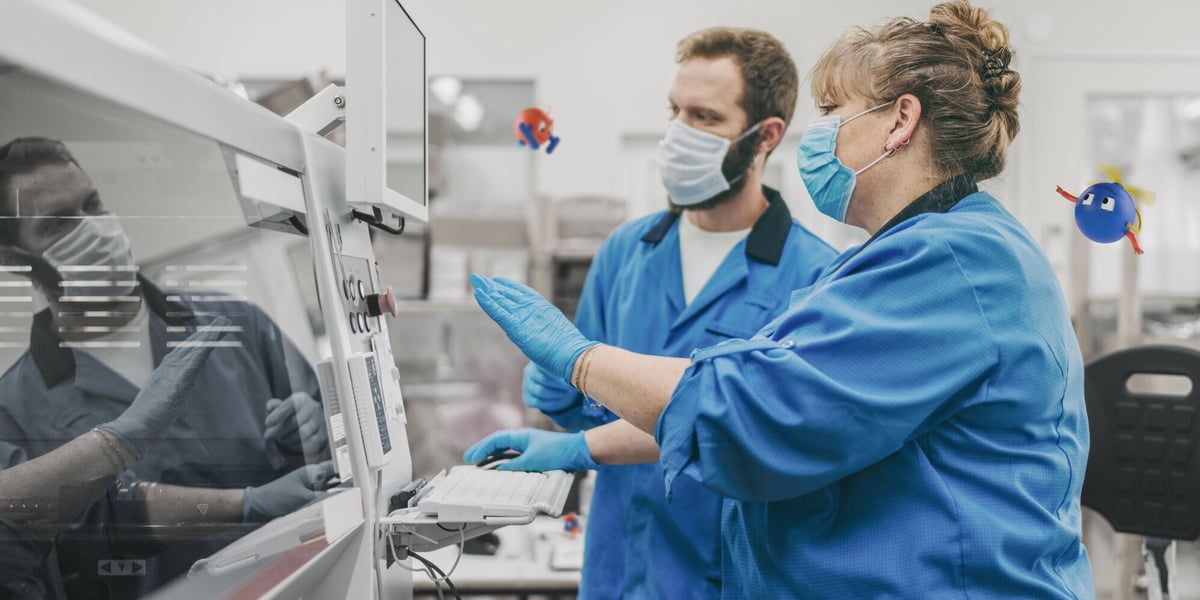Strategies for tackling your biggest research & development KPI: Time to market
Strategies for tackling your biggest research & development KPI: Time to market

From mRNA vaccines to cell-based gene therapies, the pharmaceutical industry has released innovative and effective products in the past few years. But these major innovations come with major challenges, and it’s taking a significant amount of time to get these products to market. In fact, the price to develop new therapies has nearly tripled since 2013 to more than $6 billion.
“When we’re dealing with these new therapies, there’s a completely new ecosystem,” said Joe Miles, UiPath Industry Leader, Life Sciences. “It creates some real challenges in terms of managing data as it moves across the various silos of the value chain.”
In discussions with research and development (R&D) professionals across the industry, Miles sees four primary challenges impacting the time to market:
Disconnected platforms: enterprise systems are disconnected from clinical trials, delaying contract and reimbursement processes.
Clinical data complexity: managing massive amounts of sensitive information as it moves across clinical research organizations (CROs), contract manufacturing organizations (CMOs), and third-party logistics (3PLs) creates major data silos.
Regulatory burden: trials must adhere to strict regulatory guidelines, often requiring manual correspondence and updates.
Manual, paper-based processes: attempting to manage third-party communications and information coming in via emails, spreadsheets, and faxes is slow and error-prone.
In a recent webinar, Reducing time to market with AI-powered automation, Miles sat down with CGI Vice President of Business Consulting Michael Shafer to explore how AI-powered automation can help pharmaceutical companies and life sciences organizations overcome these challenges and accelerate time to market.
Overcoming data complexities and embracing the cloud
Regulatory information management (RIM), electronic trial master files (eTMF), and clinical trial management (CTMS) systems (just to name a few), hold a vast amount of data for life sciences R&D organizations. Traditional processes can lead to data silos—or even worse, data swamps, where information is inconsistent, inaccurate, or inaccessible.
"The cloud allows organizations to be more responsive and to be able to gain access to compute much more quickly," added Miles.
Pharmaceutical companies are already making a move to the cloud. In a poll of webinar attendees, over 70% reported using a hybrid or cloud-based approach for their systems, indicating that the industry is embracing the benefits of modern data management.
The cloud is not free of challenges, however. "In order to get to a best-of-breed solution, it’s sometimes necessary to have more than one platform," noted Shafer. "Intelligent automation can create the connective tissue to orchestrate the data between those platforms, reducing the manual transfer of data, and speeding the enrichment of that data or reforming it for use."
Automation provides a "single source of truth" and enables seamless integration in the cloud.
Leveraging AI for document understanding and data processing
Life sciences R&D is rigorously documented. Patient information, phone or email correspondence, and clinical reports all generate information that must be manually entered into systems. Researchers often spend more time processing documentation and less time interpreting data.
An AI-powered automation platform with intelligent document processing capabilities can look at the content of health authority correspondence, triage the information, pre-classify the data, and put it into a structured format for regulatory submissions. Researchers can stay focused on their research, which allows them to respond faster and more consistently, improving all-important regulatory relations and accelerating time to approval.
"The use of document understanding, natural language processing, similarity algorithms, and indices pulls out data and allows it to be better used in your cloud platforms and business intelligence," said Shafer.
Using automation to eliminate paper processes allows life sciences organizations to take a data-centric approach rather than a document-centric approach to research. The more AI and machine learning (ML) models are used to interpret data, the more accurate and predictive they become, further enriching the R&D pipeline.
Navigating regulatory compliance with automation
When it comes to regulatory approval, observing good practices is critical. Balancing using attended and unattended automation can ensure compliance while optimizing productivity and reducing time to market.
Unattended automation can manage sensitive clinical data in a very controlled manner, improving efficiency and accuracy without compromising security. On the other hand, attended automation with a human in the loop to review suggested metadata or templated responses ensures the right level of oversight while accelerating the process by giving humans the tools they need to do their jobs more efficiently.
A poll of webinar attendees showed that nearly two-thirds already use unattended automation in shared service areas like finance or HR, while a significant portion are automating the submission of regulatory forms or digitization of documents. A few have even begun integrating large language models (LLMs) into their processes.
RIM systems and regulatory compliance are another point of challenge for pharmaceutical companies. Automation can interact directly with health authority gateways to load submissions and archive them in a RIM system, as well as manage legacy content and correspondence. Automation can also conduct audits of health authority websites for guidance updates to ensure researchers are always operating under the most current recommendations.
"It’s important to remember that automation is not a replacement for safety systems," said Miles. "But what we’re able to do is improve the visibility, responsiveness, and transparency around patient data."
Using automation to tackle big challenges
In R&D, "failure" isn’t necessarily a negative word. In fact, early knowledge that a trial will fail due to low patient populations, supply chain issues, or regulatory changes can save a lot of money and time. Automation processes vast amounts of data to identify potential successes and failures before greater investments have been made.
This is especially critical for niche therapies for rare diseases. AI-powered automation can scour through registries and publicly available information to work with providers and identify trial participants, even those who may have been misdiagnosed.
Modern connected medical devices, such as continuous glucose monitors, keep patients healthy and safe. They also produce massive data sets that are immensely valuable to researchers—but require a massive administrative burden to manage.
Fortunately, AI and ML are designed to manage huge amounts of data efficiently. AI serves as an orchestrating layer for big data. It can be applied at the macro level for developing large-scale pharmaceuticals. And it can be applied at the micro level for treating individual patients.
Automation and the future of life sciences
AI-powered automation holds immense potential for life sciences organizations seeking to drive innovation and accelerate time to market. By employing cutting-edge technology and adopting a strategic approach to automation, pharmaceutical and life sciences organizations can overcome systemic challenges, streamline processes, and ultimately deliver life-saving therapies to patients more efficiently.
If you’re ready to accelerate your R&D processes, watch the on-demand webinar, Reducing time to market with AI-powered automation.

Global Industry Marketing Manager, Healthcare and Life Sciences, UiPath
Get articles from automation experts in your inbox
SubscribeGet articles from automation experts in your inbox
Sign up today and we'll email you the newest articles every week.
Thank you for subscribing!
Thank you for subscribing! Each week, we'll send the best automation blog posts straight to your inbox.



